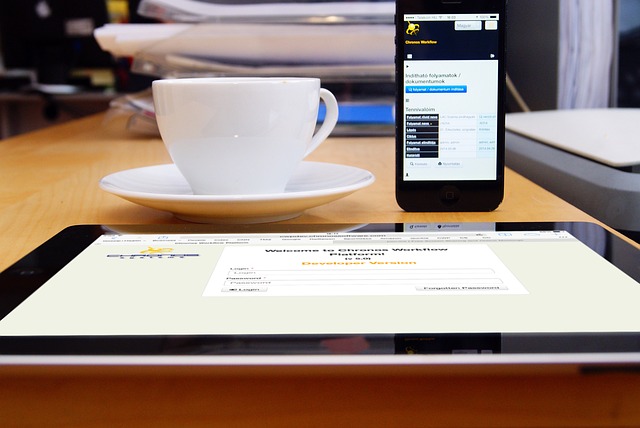The concept of the paperless office has been around for decades, but it’s only recently that technology has made it possible to achieve this, thanks to the widespread adoption of word processing tools, PDFs, and cloud-based storage systems.
This ideal work environment relies solely on electronic documents and devices for all its operations.
Virtually anyone who uses paper in their everyday activities can easily transition to this digital system. It is secure, robust, and shareable. Plus, it is easy to convert between formats if needed, combine PDF files into one single document, and collaborate on projects regardless of location.
That’s not all. There are many benefits to going paperless, including reducing costs, increasing efficiency, and being more environmentally friendly. But making the switch to a paperless office can be daunting, especially for businesses that have been reliant on paper for years.
So how can you make the paperless office a reality in your workplace? This paperless document organization guide proffers some tips on how to go paperless.
But We Still Need Paper!
While the goal of a paperless office is to eliminate paper as much as possible, it is still possible that some businesses may need to use paper in certain circumstances. In fact, despite the advantages, it might be difficult going paperless at work. It’s probably not even possible to eliminate all proper documents.
For example, some legal paperwork may still need to be signed and physically mailed or delivered, and some people may prefer to take handwritten notes or print out documents for reference. Of course, in some of these cases, the use of paper can be minimized by using electronic signatures and storing documents electronically whenever possible.
But at the end of the day, the goal of a paperless environment is better channeled towards reducing the reliance on paper as much as possible, while still allowing for the occasional use of paper when necessary.
Finding Common Ground: The Paper-efficient Office
Even though we live in a digital world, many offices still rely heavily on paper. In fact, the US Environmental Protection Agency estimates that the average office worker uses 2 pounds of paper daily! That’s a lot of paper. Fortunately, there are ways to reduce the amount of paper you use in the office.
By finding a common ground and making a few simple changes, you can help your office go paperless. Here are a few tips on how to find a common ground for achieving a paper-efficient office:
Conduct a Paper Audit
One best way to go paperless is to get started by doing a paper audit. This will help you to identify areas where paper is being used unnecessarily and what can be done to reduce it. Once you’ve done that, you can start implementing the paper-saving strategies discussed below.
Use Tools That Can Help You Move From Paper-Based To Digital Operations.
There are a number of tools available that can help you convert paper documents into digital formats. For example, you can use a scanner to convert paper documents into PDFs. You can also use a PDF editor to convert between file formats for compatibility purposes.
There are also a number of document management systems that can help you store, share, and edit documents electronically. These systems can be very helpful in reducing the need for paper copies of files.
Combine Digital With Traditional Paper Habits.
There is no need to completely abandon paper. In fact, combining digital and traditional paper habits can be an effective way to move towards a paperless life. For example, you can use paper for brainstorming and then digital for document sharing and collaboration.
Printing Documents Only When Absolutely Necessary.
One of the biggest sources of paper waste in offices is unnecessary printing. In fact, records show that the average office prints at least 10,000 sheets of paper every year, with 45% of the daily quota ending up in the trash can at the close of work.
To solve this problem, make a concerted effort to only print when absolutely necessary. When you do need to print, be sure to use double-sided printing whenever possible. This way, you can save paper and avoid the hassle of printing and filing physical documents.
Work With Scanned PDF Files.
If you are thinking of how to go paperless at work, one of the easiest ways is to scan all of your important documents and store them as PDF files. That way, you can access them electronically whenever you need to, and you won’t have to worry about losing or damaging them. You can use a variety of scanning apps to scan your documents and save them as PDFs, or you can use a physical scanner. You can also use a PDF editing tool to edit your documents on the go.
Digitally Share Documents And Ideas.
In the past, businesses had to rely on fax machines and physical mail to share documents and ideas. Now, there are a variety of digital tools that make it easy to share documents and ideas electronically. For example, you can use email to send documents to clients and coworkers, and you can use document-sharing platforms like Google Docs to collaborate on projects in real-time
Implement A Document Management System.
A document management system (DMS) allows you to store and organize all your electronic documents in one central location. This can include documents in various formats such as PDFs, Word documents, and Excel sheets. A DMS can help you easily find and access paperless reports when you need them, reducing the need to print copies.
Wrapping Up
Going paperless is often thought of as a futuristic concept, but the reality is that it is already here. Well, not exactly, but at least companies are increasingly becoming paper-efficient.
Of course, going completely paperless may not be practical or desirable for every business. Some industries may require physical copies of documents for legal or regulatory reasons, and some people may still prefer to work with physical documents. Additionally, it’s important to have a secure system in place to protect sensitive paperless documents.
However, the use of reliable document management systems and digital tools can significantly help with paperless productivity and improve the organization and efficiency of a business.
One such PDF tool that makes becoming paper-efficient simple and affordable is Lumin.
Try it today.



![Eagle Hemp CBD Gummies Review: Tinnitus [Price Exposed 2022] Website Scam & Where To Buy?](https://marylandreporter.com/wp-content/uploads/2022/04/eagle-hemp-gummies-440x264.jpg)



Recent Comments